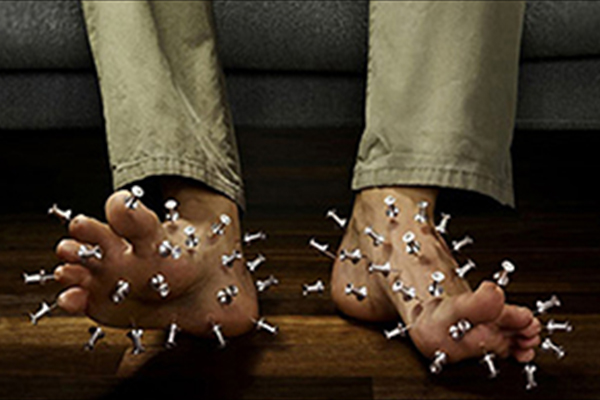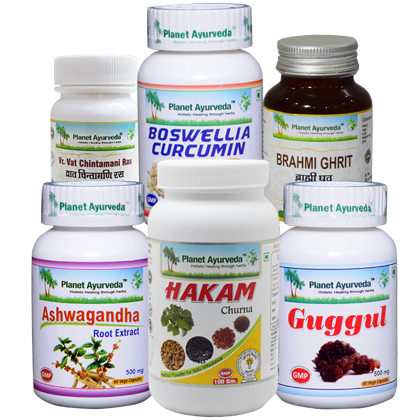Herbal Treatment Available for MADSAM – A Variant of CIDP
Abstract
MADSAM – A variant of CIDP, is a rare acquired disorder of the nerves. It is a multifocal acquired asymmetrical demyelinating sensory and motor poly neuropathy that causes muscle weakness and sensory loss. It was first described in 1982 by Lewis and colleagues that’s why it is also known as the ‘Lewis-Sumner syndrome. The cause of the disease is still unknown. In this the initial involvement is of the arms which later spread to distal legs. As per the research up to one half of the patients with MADSAM may develop a typical pattern of CIDP. As per Ayurveda, it is correlated with Sarvāṅgagata Vātavyādhi. It is an important thing to note that the MADSAM is a chronic disorder where corticosteroids are the line of treatment, but the long term use of corticosteroid therapy may lead to osteoporosis or osteopenia and other major side effects. Whereas Ayurvedic treatment not only brings the pathology to a halt but also soothes the patient of the pain without causing any further damage or side effects.
CIDP Chronic inflammatory demyelinating polyneuropathy. As the name depicts, it is the disorder of the nerves. In this disorder, there is inflammation of the nerve roots and peripheral nerves along with the damage of fatty covering that is of myelin sheath over the nerves. Here in this article we are going to talk about MADSAM which is a multifocal variant of CIDP and its management through Ayurveda.
MADSAM stands for multifocal acquired demyelinating sensory and motor poly neuropathy (MADSAM). Its onset is insidious. Initially, it involves the arms, later spreads to distal legs. Muscle stretch reflexes are either reduced or get absent in a multifocal pattern that further progresses to areflexia.
Cause
MADSAM is an acquired disorder but its cause is still unknown.
Signs and Symptoms
Its symptoms are not present at the time of birth and are due to inflammation of the nerves leading to the upper body and the destruction of the fatty covering that protects the nerves (myelin sheath). It includes:-
1. Hand and arm weakness
2. Loss of reflexes in upper limbs
3. Loss of sensation in hands and fingers
4. Tingling in the hands and fingers (paresthesias)
5. Pain in upper limb and lower limbs
Diagnosis
1. Purely through clinical evaluation
2. MRI
3. Nerve conduction studies
Ayurvedic Treatment
As per Ayurvedic texts, this condition can be correlated with Sarvāṅgagata Vātavyādhi (Vata disorder affecting all parts of the body primarily upper limb) which is “Apatarpan” in nature (due to poor growth of body tissues).
The main nidanas are Dhatukshaya and Avarana.
1. Dhatuksayakara nidana includes:
- Ruksh and laghu ahara
- Vishmasan (uncompatible food)
- Ativyayam (excessive exercise)
- Ati prabhasana (excessive talking)
- Excessive loss of blood
- Suppression of natural urges
2. Avaranakara :
- Day time sleep
- Ama : Undigested toxin
- Vistambhi ahara : The diet that blocks channels.
- Marma abhigata : injury to vital points
Because of these causes the dhatus gets degenerated. This degeneration of dhatus makes strotas (nourishment providing channels) rikta (empty). All this leads to vitiation of Vata. Vata being laghu (light), ruksha (rough) and khara (harsh) in nature leads to the damage of myelin sheath of nerves. This can be compared with the degenerative changes in the nervous system leading to nervous disorders.
Mainly the Vata is responsible for this degeneration that to “Udana vayu” and “Vyana vayu”.
Rupa (Symptoms)
- Balakshaya – weakness
- Mamsa shosha – wasting
- Sthambha – Spasticity
Herbal Remedies for MADSAM
Ayurvedic treatment has shown remarkable improvement in nervous disorders. It not only brings the pathology to a halt but also alleviates the pain of the patient without causing any further damage. It rejuvenates the body cells and empowers the immune system of the body to fight against the disease itself. In Planet Ayurveda the finest ayurvedic formulation that are known to deliver invincible results in the cases of MADSAM and CIDP are prescribed/sold under CIDP pack name. It consists of Ashwagandha capsules, Hakam churan , Guggul capsules and Boswellia curcumin. 

1. Ashwagandha Capsules
Ashwagandha is also known as Withania somnifera. It is a wonder herb. It helps in strengthing the immune system. It is a potent adaptogen. It has anti–inflammatory, anti-cancerous, anti-stress and anti-oxidative properties that’s why it is used in treating various disorders related to nerve tissue damage, heart disease, atherosclerosis and ageing. It is vata and kapha pacifier. Because of all these properties it is the basic formulations prescribed in musculo-skeletal conditions. It is taken in the dosage of 1-2 capsules with plain water or milk.
Dosage: 2 capsules twice daily with plain water.
2. Hakam Churan
It is a herbal combination that consists of Chandershoor (Lepidium sativum), Kalonji (Nigella sativa), Methi (Trigonella foenum graecum), Ajwain (Trachyspermum ammi). This combination has great anti-spasmodic properties and channel detoxifying properties. It has the ability to recover the normal digestion by deterring Vata vitiation. As per Ayurvedic texts, indigestion (ama) is the root cause of all the metabolic disorders. Chronic indigestion promotes the vitiation of Vata dosha which confined in joints and muscles and produces severe pain. This formulation being hot in nature balances Pitta and empowers the digestive fire. There by kick starting the metabolism of the body. All these properties make it great medicine of choice for Nervous disorders, Rheumatoid arthritis, Osteoarthritis, Cervical spondylitis and other inflammatory painful conditions.
Dosage: 1 teaspoonful twice daily with plain water.
3. Guggul Capsules
Guggul is known by the Sanskrit name “Guggulu,” which means, “protects from disease. It strengths the immune system. It is a natural source of antioxidants. It pacifies “TRIDOSHA”. It is best in alleviating vata aggravations. As per Ayurvedic patahology, the accumulation of ama (toxic residues) within the tissues leads to the joint problems. Scraping and detoxifying qualities of guggul help in clearing these toxins from the joints. Its caliber to lubricate and rejuvenate the tissues within and around the joints helps to aid strength and proper movement within these delicate spaces.
Dosage: 2 capsules twice daily with plain water.
4. Boswellia Curcumin
Boswellia curcumin are herbal capsules prepared from pure extracts of Shallaki (Boswellia serrata) and Curcumin (Curcuma longa). Boswellia, is an effective anti-inflammatory and works great as a painkiller. It prevents the cartilage damage. As per research the boswellic acid can prevent the formation of leukotriene’s in the body. These molecules are known to cause inflammation. Curcumin is a key chemical in turmeric. It has anti-inflammatory and anti-oxidative properties. It reduces pain, inflammation and stiffness related to joint disorders. In Ayurveda, it is well known as a cleansing agent. It helps in detoxifying the toxins away from the joints.
Dosage: 2 capsules twice daily with plain water.





